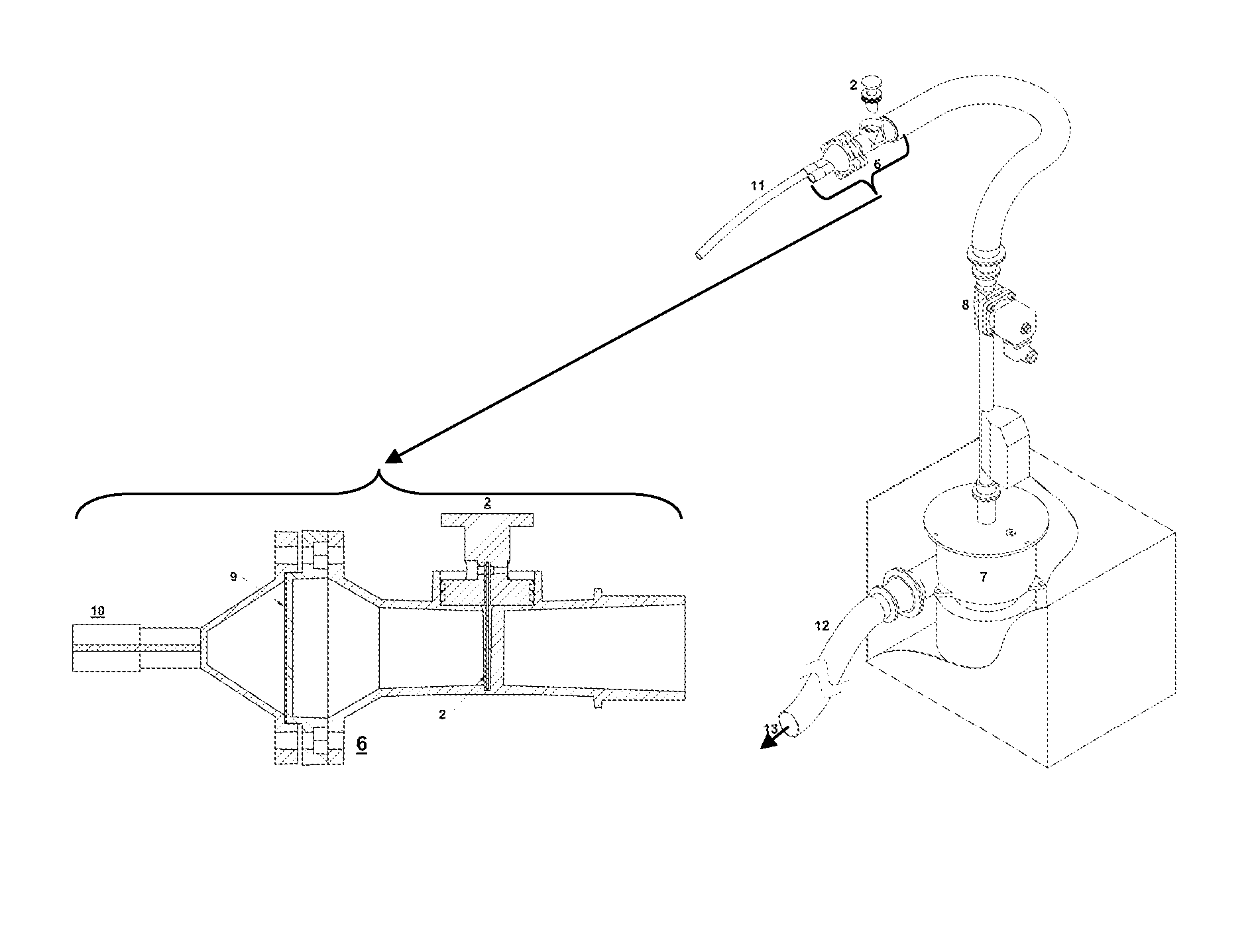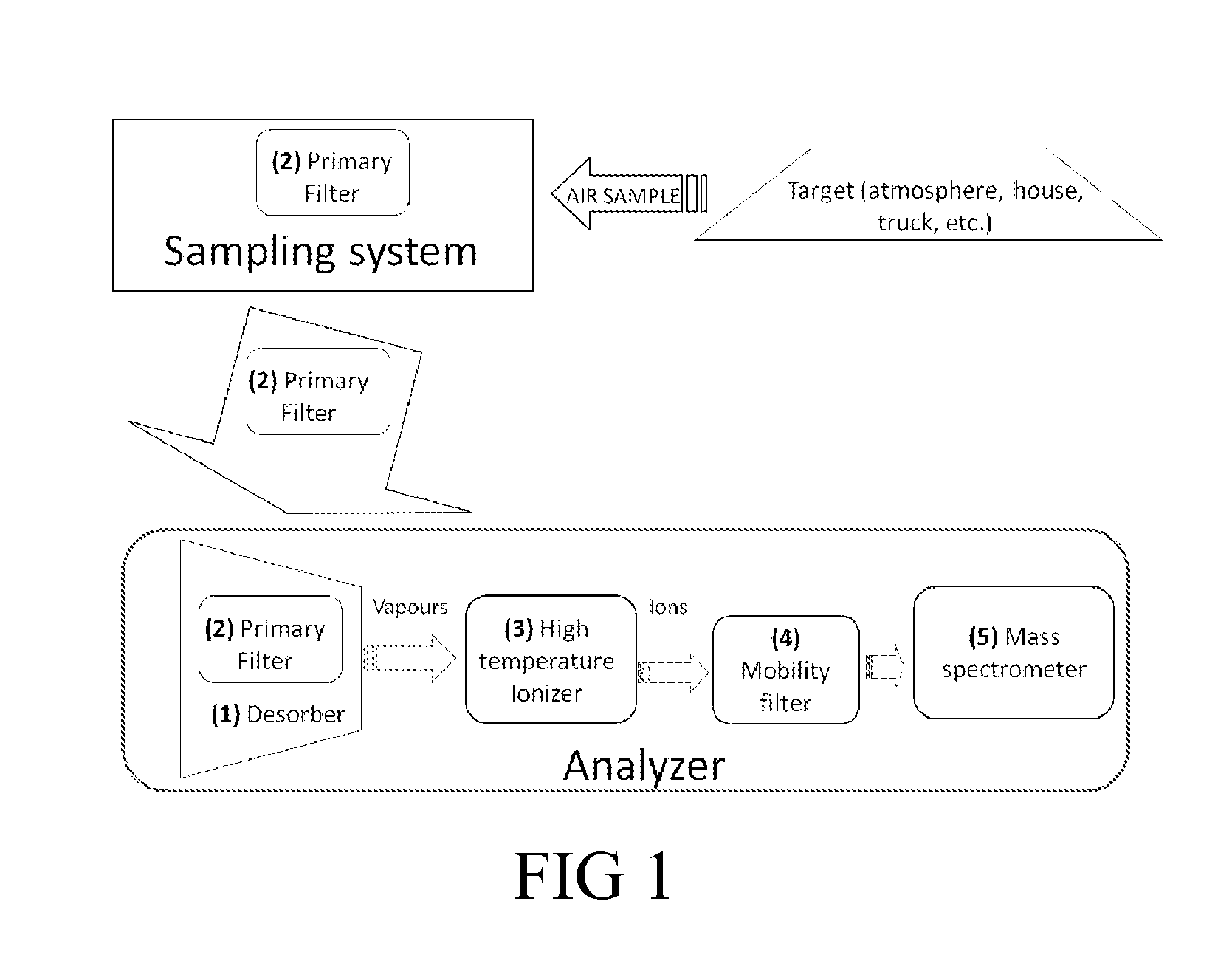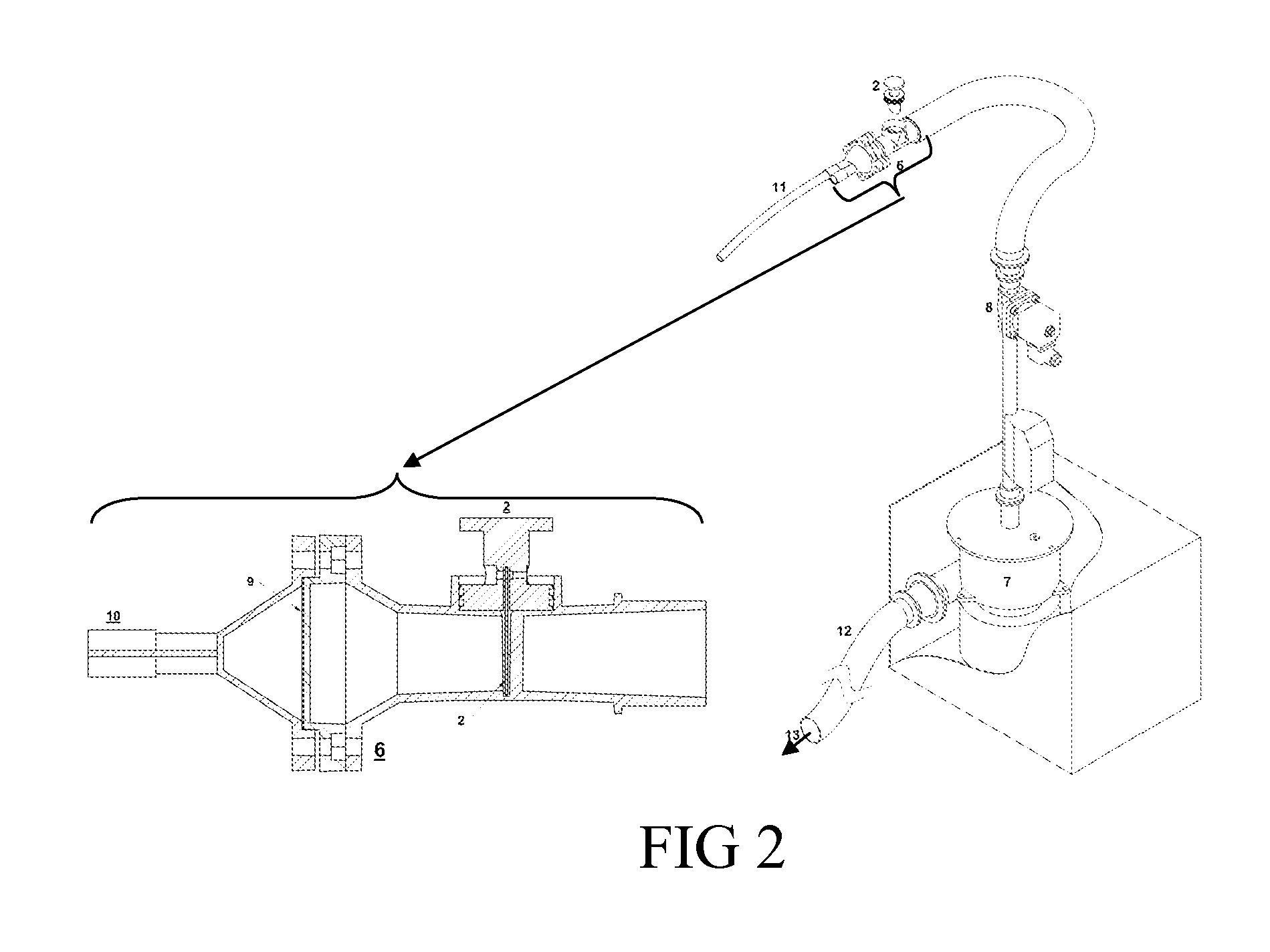Method for detecting atmospheric vapors at parts per quadrillion (PPQ) concentrations
a technology of atmospheric vapors and concentrations, applied in the field of detecting atmospheric vapors at parts per quadrillion (ppq) concentrations, can solve the problems of increasing the number of competing vapors in the atmosphere, increasing the difficulty of detection of vapors, and increasing the number of detectors, so as to reduce the number of subtle sources of contamination
- Summary
- Abstract
- Description
- Claims
- Application Information
AI Technical Summary
Benefits of technology
Problems solved by technology
Method used
Image
Examples
Embodiment Construction
[0056]A sketch of the Analyzer used for vapor detection is given in FIG. 3, showing a desorption system (1) where the vapors collected in a filter (2) by the sampling system are heated, released and conveyed by a small flow of gas into the ionizer (3), the DMA (4) and the MS system (5), where several target species are detected sequentially during the desorption period. The effectiveness of the analyzer used in the present invention is increased by incorporating a sampling system departing in several ways from conventional samplers.
[0057]Low cut-off pre-filter: One solution adopted to remove the large statistical noise produced by aerosol particles according to the present invention is to remove essentially all the particles with a pre-filter having the lowest practical size cut. This is equivalent to base the detection mostly on vapor molecules rather than on both particles and molecules. A less extreme alternative is to remove only the largest particles, whose low frequency of app...
PUM
| Property | Measurement | Unit |
|---|---|---|
| temperature | aaaaa | aaaaa |
| pressure boiling points | aaaaa | aaaaa |
| dielectric constants | aaaaa | aaaaa |
Abstract
Description
Claims
Application Information
 Login to View More
Login to View More - R&D
- Intellectual Property
- Life Sciences
- Materials
- Tech Scout
- Unparalleled Data Quality
- Higher Quality Content
- 60% Fewer Hallucinations
Browse by: Latest US Patents, China's latest patents, Technical Efficacy Thesaurus, Application Domain, Technology Topic, Popular Technical Reports.
© 2025 PatSnap. All rights reserved.Legal|Privacy policy|Modern Slavery Act Transparency Statement|Sitemap|About US| Contact US: help@patsnap.com



